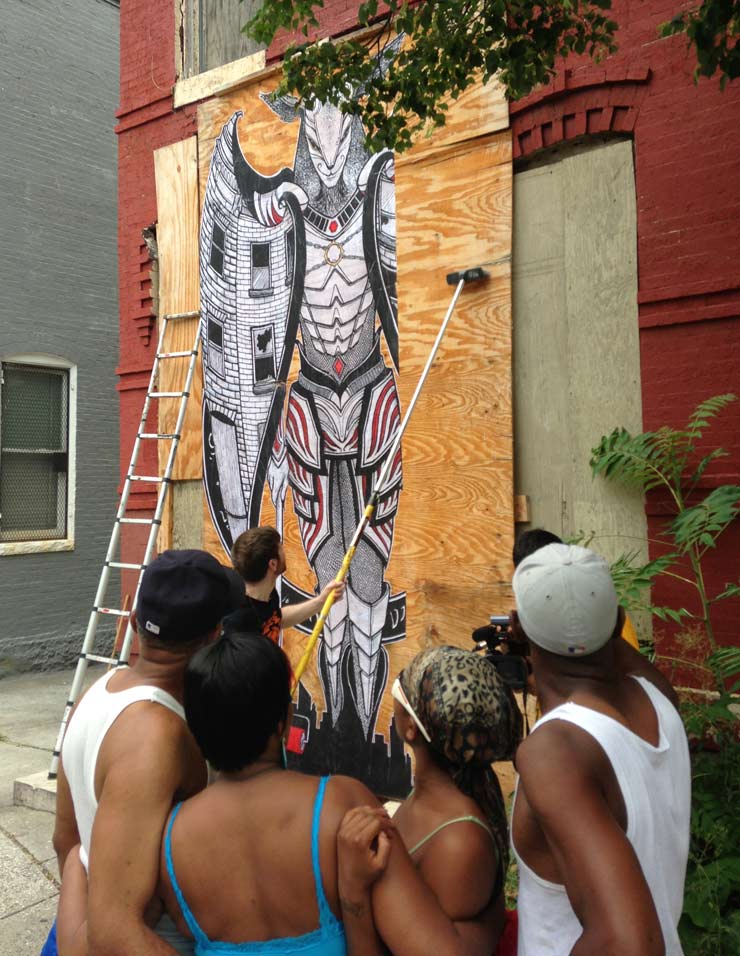In a twist on the Broken Windows Theory, street artists are using their skills to combat urban blight in Baltimore with “The Slumlord Project”. By drawing the attention of neighbors to abandoned and vacant properties and giving pertinent ownership information to take action on, 17 artists are spray painting and wheat-pasting in a D.I.Y. educational program that aims to renew the social contract in communities hard hit by crumbling real estate, crime, and diminished opportunity.
Harlequinade. Slumlord Project, Baltimore Summer 2013. (photo © Tarek Turkey)With tongue in cheek, Baltimore street artist Nether calls “The Slumlord Project” an “unsanctioned public art festival,” where artists are invited to conceive of targeted installations on neglected properties. Along with Carol Ott, the founder of website and organization The Slumlord Watch, he encouraged artists to create with a sense of focus to draw attention to the companies, investors, private tax payers, and even the Housing Authority of Baltimore City about the large swaths of depressing and dangerous buildings decaying where neighborhoods and communities once flourished.
The result? A good old-fashioned bricks and mortar shaming project that calls property owners on the carpet, activates city agency responses, and encourages neighbors to get involved in a civic way to improve conditions on their block.
Harelequinade. Slumlord Project, Baltimore Summer 2013. (photo © Tarek Turkey)"The goal of the project was to catalyze a larger conversation about Baltimore’s ignored vacancy issue," says the Nether, who had been putting up his wheat-pasted portraits of neighborhood folks on boarded-up doorways of the city’s abandoned buildings when he met Ott and became impressed with her enthusiastic online blog that documents the sad side of Bmore. Just how many buildings are vacant ranges from the city estimate of 16,000 to community group estimates of more than 40,000. But just looking at a Google map that uses some of the data from the groups website gives an idea how widespread the problem of vacancy is in Baltimore.
"It’s really frustrating when the government won’t acknowledge the problem," says Ott in a video about her experience with her organization and her work to make neighborhoods structurally safer, "You cannot fix what you won’t acknowledge."
Street Art and Activism With 'The Slumlord Project' In Baltimore
Go follow @spitdope for more #freestyles and up coming #battles #rap #hiphop #dope #spitting #killingit submit your #videos at spitdope@gmail.com or Rippdcanvas@gmail.com #rippdcanvas



















